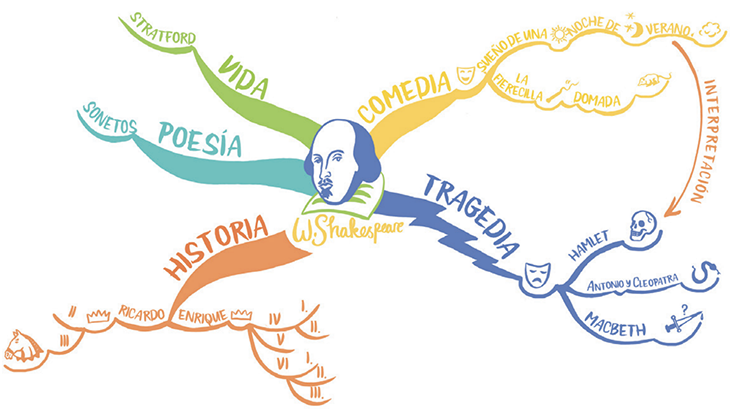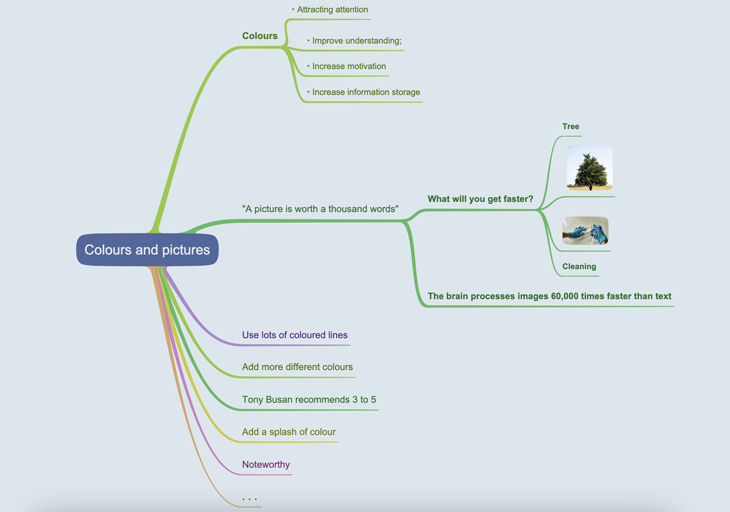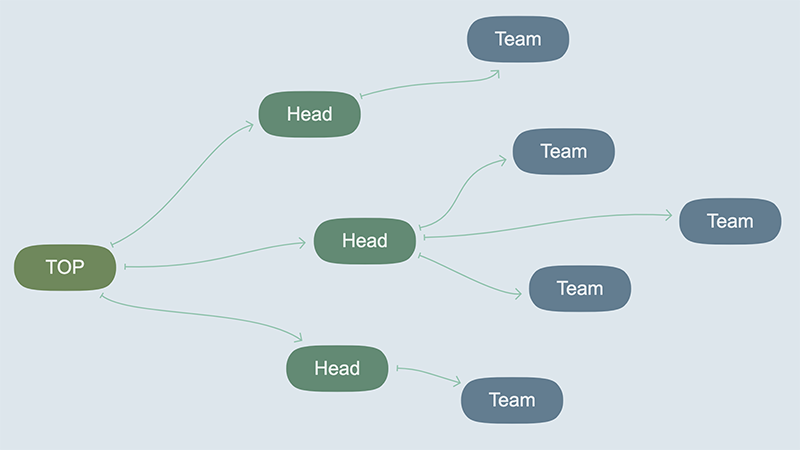31.01.2023
Why does our memory fail us and how can we improve our intelligence? These are the questions Tony Buzan was asking. He dedicated his life to researching brain function, memory, thinking and sharing his experiences with people. Tony Buzan published books (about 100, including co-authored ones), wrote articles, conducted TV shows, trainings, and master classes.
He has developed widely used methods of training, one of which is mindmapping.

An example from the book by T. Buzan
The emergence of the mind map stems from Tony's frustration with traditional methods of memorisation. When grades in high school deteriorated, Busen despaired of linear learning methods such as to-do lists or cheat sheets, and looked for more creative ways to remember and learn.
A mind map is a method of visual expression of thoughts which helps to structure and remember information and generate ideas. However, not everyone is aware of this method or knows how to use it correctly.
Mind maps were created in the 60s by Tony Buzan after studying psychology, neurophysiology, neurolinguistics, semantics, information theory, memory, perception and creative thinking. He realised that the linear representation of information was not working and began looking for a way to make simple connections between key words for easy recall.
Linear thinking (adding items to a list in sequence) - limits your thinking. The further you go down the list, the more your thinking becomes depleted. Our brains can't think in lists effectively.
Tony Buzan's mind maps have changed the way information is presented and increased the efficiency of many aspects of daily life.
A little history
As early as the ancient Greeks invented a system for remembering information using imagination and association, such as the locus technique of the memory palace. You may remember it from the TV series Sherlock (improving memory by selecting places and forming mind images of things they want to remember, told in a particular order in visualised places).

Buzan studied how the Greeks used colour to connect concepts. He realised that plain blue or black ink on white paper was boring and didn't 'engage' the brain, so he added coloured, branching lines.
In Tony Buzan's book, Superthinking, he writes about how to improve mind maps to be more effective. To do this, the following elements need to be included in them:
- Colour.
Colour is perceived and verbally encoded by the right hemisphere of the brain, and words are encoded by the left hemisphere. Colours stimulate memory and creativity. Psychologist Hedwig von Restorff found that people remember better objects that stand out from their surroundings in some way (e.g. highlighted in red).
Colours also:- Attract attention;
- Improve comprehension;
- Increases motivation;
- Increase retention of information.
- Images.
Our brains process images 60,000 times faster than text. Psychologists Haber and Nickerson have proven that 'a picture is worth a thousand words'. Buzan explains that the effectiveness of mind maps lies in the brain's ability to understand images quickly and efficiently.
"A map is filled with images, and in fact one picture is worth a thousand words. The branches are non-linear, they diverge because that's how the brain works," says Tony. "So if you have an mind map with 10 images, that's 10,000 words of information."
By the way, the IOctopus service conforms to all the principles.
Tony Buzan's rules for making mind maps

- Step 1: Start from the centre.
Write the main idea, purpose or theme of your map, place it in the centre.
- Step 2: Add pictures.
Remember that "a picture is worth a thousand words".
- Step 3: Add colours.
Colour makes information stand out and makes it easier to remember. Mr. Buzan recommended using 3-5 colours.
- Step 4: Draw branches.
Create lines between the branches and the centre. This will give you the structure for the most effective functioning of the brain.
- Step 5: Make the lines curved.
Some people think this detail is pointless, but Tony Buzan has a different point of view. Curves create stronger connections, they are smooth and pleasing to the eye.
- Step 6: Use individual keywords.
Using keywords instead of long phrases or sentences creates better associations.
- Step 7: Use more pictures.
You should use as many images as possible to stimulate your whole brain. Usually we use words - they stimulate the left hemisphere of the brain. The right hemisphere is stimulated by colours and pictures. Try to use pictures instead of words as often as possible, they will help you think faster and more creatively. And the mix of pictures and words will allow your hemispheres to work simultaneously.
It is crucial that you understand that mindmapping has pros and cons. Mind maps help with prioritising, combating procrastination, preparing, organising, planning for the future, weighing up the pros and cons, learning the language, taking extended notes and taking stock. But the mind map can also make your project more difficult. Try different methods and applications.
If you are interested in Tony Buzan's methodology - try creating your first mind map now!
The interactive instructions are here.
See also
How can mind maps help increase your company's profits
Let's have a look. For example, in a mind map, it is convenient to see what you have now and what you want to get.
In this format, you can immediately see the ways of moving, the pros and cons, the benefits and costs.
How to master all the key nuances of creating mind maps in 10 minutes? And most importantly, to master for years. So that you don't have to go back to it.
It's easy with the quick, interactive assignments in this article.
